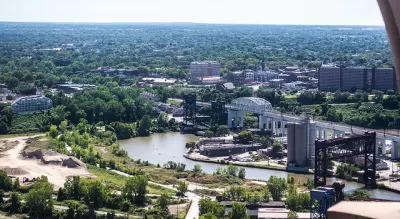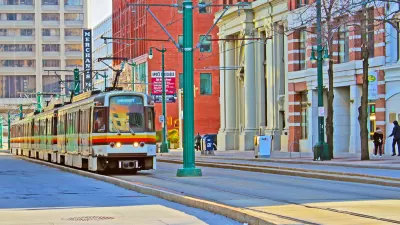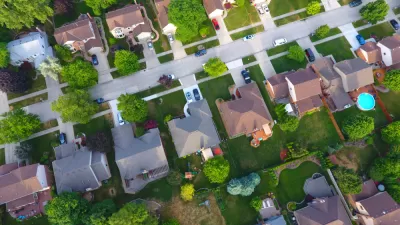In the Rust Belt, neighborhood decline is much more significant than gentrification.

Much ink has been spilled about gentrification and housing costs in high-cost cities. But is gentrification common in declining cities? In The Divided City, Alan Mallach answers that question: not very. Mallach shows that islands of gentrification exist in population-losing cities, but that those cities' seas of urban decline are far more extensive.
Mallach notes that even in older, population-losing "legacy cities" like Pittsburgh and Cleveland, the population of one group is rising: college-educated persons between 25-34, or as he calls them, "Young Grads." For example, in every year since 2000, 5,000 or more Young Grads have moved into Baltimore, and 3,000 or more into Pittsburgh. Moreover, this trend has accelerated over time: in Baltimore, Pittsburgh and St. Louis, the number of Young Grads grew more rapidly in the 2000s than in the 1990s, and more rapidly between 2010 and 2016 than in the 2000s. Some authors have written that "millennials" are moving to suburbia—but this claim overlooks the distinction between the most educated millennials (a group which overlaps significantly with Mallach’s Young Grads) and less educated millennials whose migration patterns may be different. In fact, the number of 25-34 year olds who did not graduate from college has declined in the 2010s in all three cities.
But Mallach goes on to point out that despite the rise of the Young Grads, gentrification in population-losing cities is not very common. In Pittsburgh, for example, only eight of that city's 100-plus Census tracts have gentrified by Mallach’s definition.* When gentrification does occur, it is most likely to occur in formerly white neighborhoods. Only two of Pittsburgh's eight gentrifying Census tracts were more than 30 percent black in 1970. Similarly, in St. Louis only 5 only out of 35 gentrifying neighborhoods were over 40 percent black in 1970.
More importantly, Mallach shows that these gentrifying areas are the exception rather than the rule. Mallach cites one study finding that out of 1,100 urban neighborhoods that had poverty rates over 30 percent in 1970, fewer than one in ten had rebounded (that is, now have poverty rates below 15 percent). Meanwhile, over 1200 neighborhoods that had low poverty rates in 1970 had poverty rates over 30 percent by 2010. On balance, there were three times as many high-poverty neighborhoods in the cities studied in 2010 as in 1970. In Baltimore, four times as many people live in declining neighborhoods as in gentrifying areas, and in St. Louis, seventeen times as many.
As a result, more and more Americans, especially African-Americans, live in high-poverty areas. For example, the percentage of African-Americans living in Milwaukee’s high-poverty areas grew from 46 percent in 2000 to 58 percent in 2015. These neighborhoods continue to suffer from high crime and declining city services; as a result, the black middle class has been abandoning legacy cities for their suburbs. For example, in 2005 the city of Detroit had 68,000 black middle-class households (that is, earning $50,000 or more in 2005 dollars, or $60,680 in current dollars). By 2015, that number had been cut in half, to 35,500.
Mallach suggests that as a result of black middle-class flight, legacy cities are dominated by middle-class whites and very poor blacks, causing the urban black-white income gap to soar. In 2000, the median black family in the city of Baltimore earned 61 percent of the income of the median white family; by 2015 that number had declined to 48 percent. By contrast, in suburban Baltimore County, black income increased from 83 percent of white income in 2007 to 98 percent in 2016. This does not mean, however, that cities have experienced an influx of the rich: the number of households earning over $70,000 actually declined in Detroit and Cleveland between 2000 and 2015, and in Baltimore and Pittsburgh grew only modestly (by a few thousand households).
Even growing cities are not immune to neighborhood decline. Mallach examined a sample of Indianapolis Census tracts that were low-income (80 percent of less of the regional median income) in 2000. Only five appeared to be gentrifying, and all but one were near downtown. By contrast, 60 census tracts showed signs of significant income decline.
Mallach's last few chapters focus on remedies for the problems of the urban poor; he generally favors center-left, Great Society-type remedies such as increased government spending on job training and subsidized housing.
In sum, Mallach’s most important point is that for large chunks of urban America, the 20th century never ended: in lower-cost cities, neighborhood decline is a much more significant problem than gentrification.
*Mallach defines a "gentrifying" area as one that were low or moderate income in 2000, and where the increase in household income at least 25 percent greater than the citywide increase, and an increase in median home value 25 percent greater than the citywide increase, between 2000 and 2015.

Alabama: Trump Terminates Settlements for Black Communities Harmed By Raw Sewage
Trump deemed the landmark civil rights agreement “illegal DEI and environmental justice policy.”

Planetizen Federal Action Tracker
A weekly monitor of how Trump’s orders and actions are impacting planners and planning in America.

Why Should We Subsidize Public Transportation?
Many public transit agencies face financial stress due to rising costs, declining fare revenue, and declining subsidies. Transit advocates must provide a strong business case for increasing public transit funding.

Phoenix Announces Opening Date for Light Rail Extension
The South Central extension will connect South Phoenix to downtown and other major hubs starting on June 7.

How Housing as a Financial Product Harms Communities
Institutional buyers who treat housing as an investment product become disconnected from the impacts of higher rents, displacement, and housing instability.

Blinded by the Light: When Brighter Headlights Decrease Safety
Bright LED headlights can create glare and reduce visibility for other drivers and pedestrians.
Urban Design for Planners 1: Software Tools
This six-course series explores essential urban design concepts using open source software and equips planners with the tools they need to participate fully in the urban design process.
Planning for Universal Design
Learn the tools for implementing Universal Design in planning regulations.
Caltrans
Smith Gee Studio
Institute for Housing and Urban Development Studies (IHS)
City of Grandview
Harvard GSD Executive Education
Toledo-Lucas County Plan Commissions
Salt Lake City
NYU Wagner Graduate School of Public Service






























